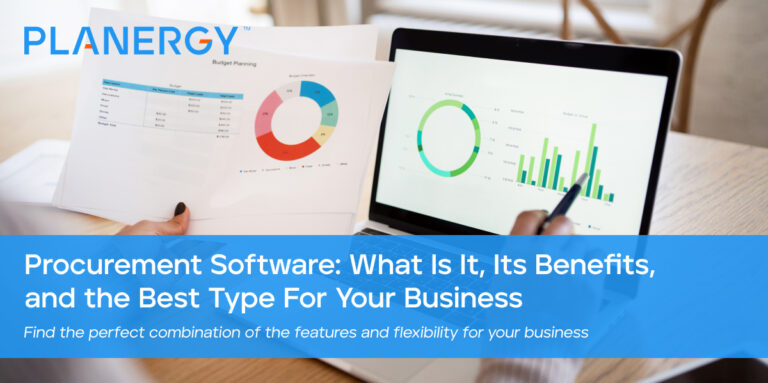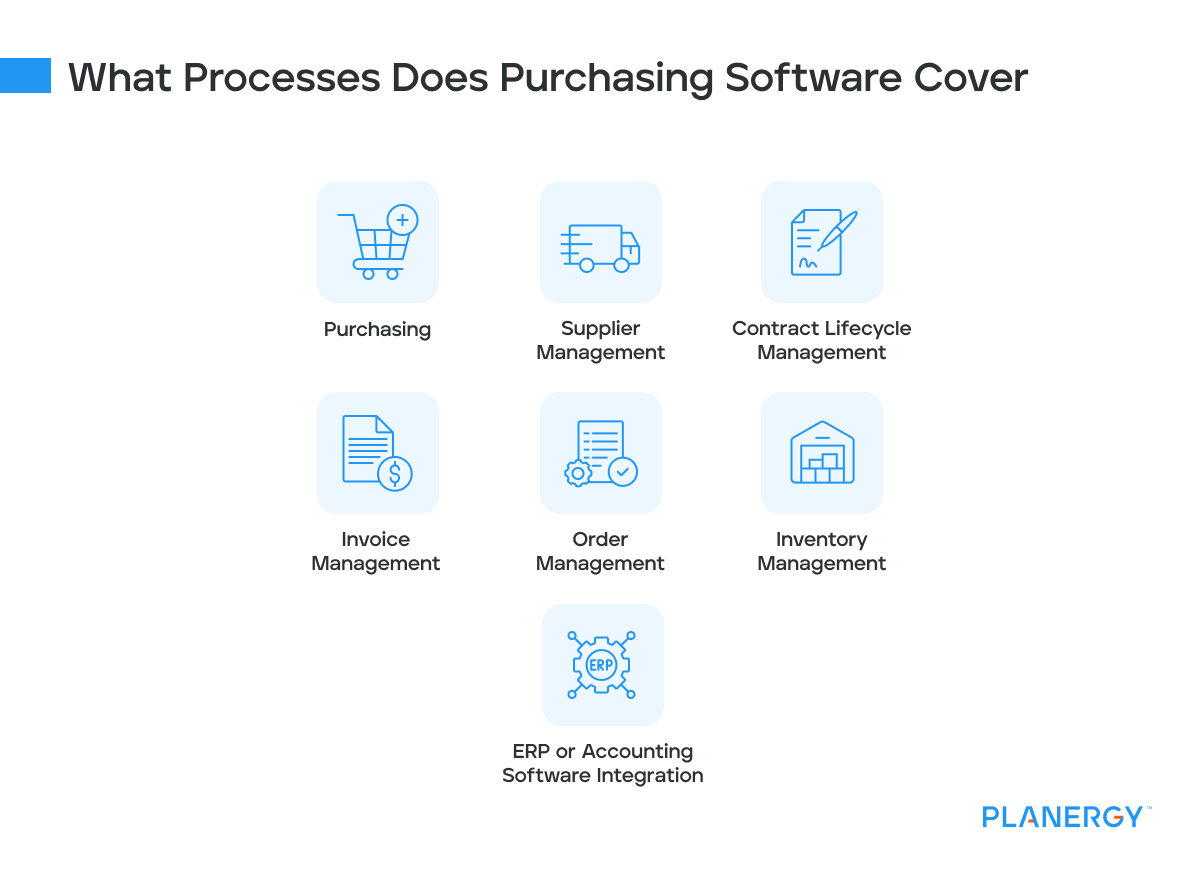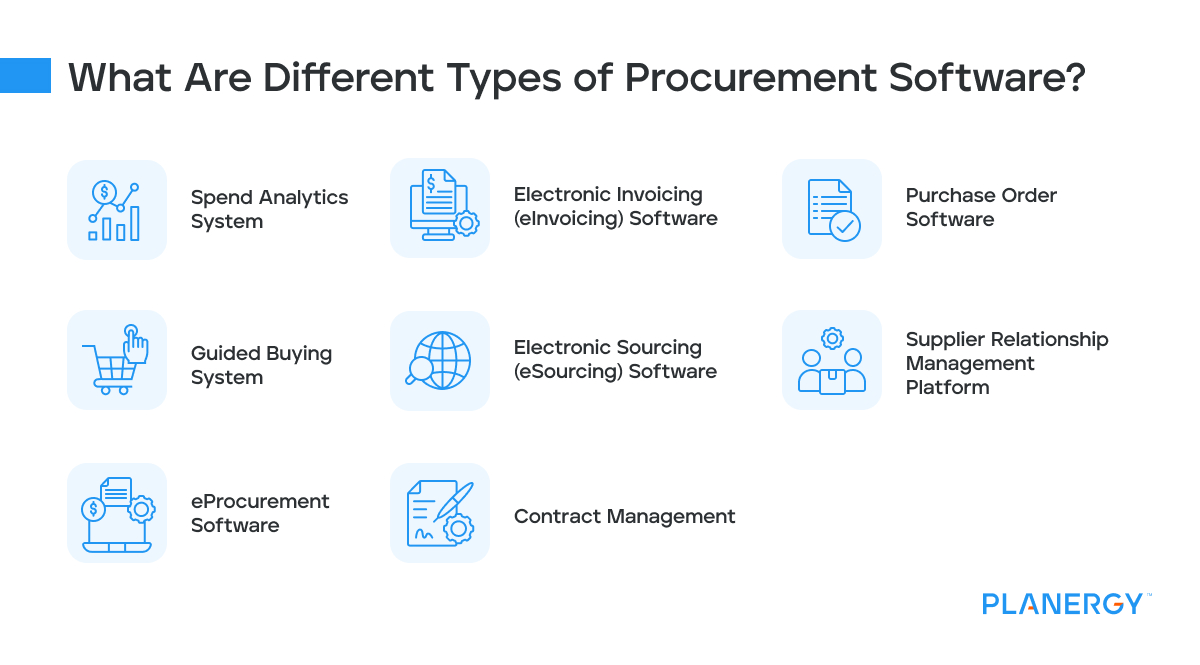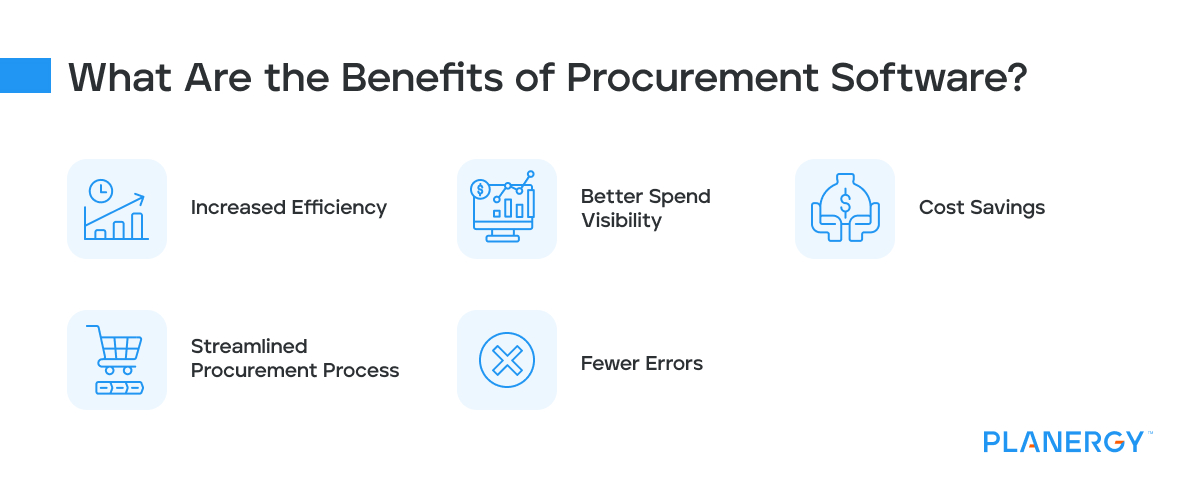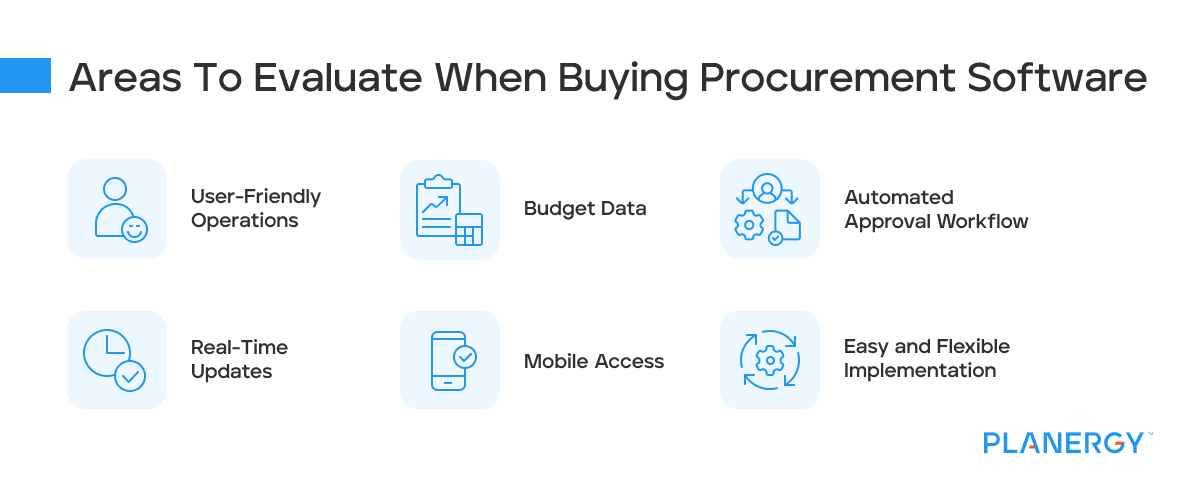Procurement is a complex process, and different types of procurement software address different parts of the process.
There is a lot of overlap between the different types of software, and many procurement solutions will perform most or all of these ‘types’ of software within one comprehensive single platform with multiple modules, as PLANERGY does.
Spend Analytics System
Spend analytics software tracks every transaction, communication, and interaction your organization conducts.
This spend analysis reveals patterns in your purchasing behavior that can help you streamline your internal processes and optimize cost savings.
Many spend analysis applications allow you to “slice and dice” your research by supplier, category, or project.
These applications can exist on their own, but this functionality is also included in a comprehensive procurement suite.
Purchase Order Software
Purchase order (PO) software is designed to automate the purchase order process.
Users can create POs from templates, auto-populate POs with purchase requisition information and vendor terms and pricing, and include boilerplate terms and conditions to meet internal and legal standards.
Purchase order approval workflows are automated, with contingencies and reminders built-in to ensure that the PO process is completed in a timely manner and PO cycle times are low.
It also provides a complete record of every purchase and helps reduce time and money losses due to human error, rogue spend, and fraud.
PO software may be a standalone application or included in a larger procurement suite that also includes other parts of the purchasing process.
Supplier Relationship Management Platform
Supplier relationship management (SRM) platforms help procurement teams source and work with the best possible suppliers for their business.
Using this software effectively can yield significant benefits in the form of reduced risk, higher profits, and a better competitive advantage.
The goal of SRM software is to build a diverse and healthy supply chain. It enables searching for vendors based on specific criteria such as capacity, location, certification, and compliance metrics.
Procurement teams can more easily identity and collaborate with ideal suppliers through the SRM system.
Finding suppliers is not the only functionality; managing them is also a key feature. SRM systems track supplier performance histories and risk profiles—making it easy to reward high-performing suppliers or trim underperformers.
It can also integrate with other systems to populate supplier data into forms and databases automatically.
Again, SRM software can be a standalone platform or included as part of a greater suite.
Electronic Sourcing (eSourcing) Software
eSourcing software allows suppliers to respond to electronically to your requests for proposal (RFPs), requests for quotes (RFQs), and requests for information (RFIs). It streamlines these bid processes and enables exposure to more suppliers.
This encourages healthy competition by allowing suppliers to see bid values relative to their competitors.
Contract Management
By providing templates and support for custom user-generated content, contract management software makes it easy for users to create contracts on demand.
Users can route contracts for approval, track revisions, alert the procurement team when current contracts are approaching renewal, and access a centralized document repository.
Electronic Invoicing (eInvoicing) Software
Also known as ePayment software, eInvoicing connects your suppliers to your procurement and accounting systems for digital invoicing and payments.
Connected invoicing helps procurement teams in several ways:
- Helps suppliers comply with contractually approved terms, conditions, and pricing.
- Ensures that invoicing and payments data is complete, transparent, and accurate.
- Instantly verifies invoices against the purchase order and receipt or packing slip to ensure correct payment. This is known as automated 3-way matching.
Guided Buying System
Guided buying systems create an internal business shopping experience similar to Amazon and other eCommerce platforms.
These systems enable procurement professionals to create pre-approved, pre-populated catalogs of goods and services from approved vendors only.
The catalogs can also include integration with suppliers online catalogs, PunchOut catalogs and other formats.
After users select items and services to purchase, they go through a “check out” process that submits a purchase requisition.
This request is eitehr routed for approval (depending on spend limits, item categories, budgets, etc.) or goes directly to procurement to generate a purchase order.
Guided buying helps companies save money by encouraging users to buy only pre-approved items with negotiated contract terms. It discourages maverick spend while ensuring fair prices and consistent quality.
eProcurement Software
Rather than just focusing on a single functionality, eProcurement software streamlines the entire procure-to-pay (p2p) process including requisitions, purchasing, and accounts payable.
It also encompasses other key features such as guided buying systems, supplier relationship management, and contract management.
PLANERGY falls under this category, as it offers a customizable and all-in-one procure-to-pay software that includes the other types of procurement software.
In addition to procurement functionality, it also features inventory management, asset management, supplier management, travel and expense management, and AP automation.
Other software may also incorporate sourcing functionality to cover source-to-pay.

